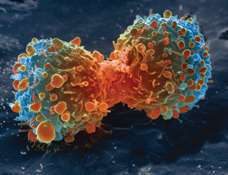현재 위치:홈 > 뉴스현황 > Press Events > Some Prostate Cancer...
저자: 업로드:2017-08-10 조회수:
Prostate cancer researchers have mapped the impact of an acquired mutation that alters epigenetic identity, the make-up of DNA, in about 50% of patient tumor samples. The discovery also identifies a new opportunity for targeted therapy.
By studying molecular-level variations in prostate cancer, scientists hope to find ways to personalize prostate cancer treatments. One such variation has been highlighted by scientists based at Princess Margaret Cancer Center. These scientists report that they have found a druggable dependency on a particular kind of signaling that is used by some prostate cancer cells.

The cells that possess this druggable dependency have a distinct epigenetic landscape, one that is seen in roughly half of prostate tumors, one that is attributable to a mutation of two genes: TMPRSS2 and ERG. This mutation, which results in TMPRSS2–ERG (T2E) structural rearrangements, causes overexpression or the ERG transcription factor, which leads to yet further molecular-level changes that cause prostate cancer cells, some of them, to become dependent on the NOTCH signaling pathway.
This shift could prove to be medically significant. "Our findings specifically show that fusion-positive prostate cancer is dependent on the NOTCH signaling pathway, which can be blocked chemically in preclinical models," said Mathieu Lupien, Ph.D., who led the Princess Margaret Cancer Center team. "This identifies a promising druggable target against fusion-positive prostate cancer and takes us a step closer to providing personalized cancer medicine for up to 50% of prostate cancer patients."
Details of the investigation led by Dr. Lupien appeared in the journal Nature Genetics, in an article entitled “TMPRSS2–ERG Fusion Co-Opts Master Transcription Factors and Activates NOTCH Signaling in Primary Prostate Cancer.” The article details the mechanisms that drive development of fusion-positive prostate cancer.
“Using chromatin, genomic and expression data, we show distinct cis-regulatory landscapes between T2E-positive and non-T2E primary prostate tumors, which include clusters of regulatory elements (COREs),” wrote the article’s authors. “We also report a T2E-specific CORE on the structurally rearranged ERG locus arising from spreading of the TMPRSS2 locus pre-existing CORE, assisting in its overexpression. Finally, we show that the T2E-specific cis-regulatory landscape underlies a vulnerability against the NOTCH pathway.”